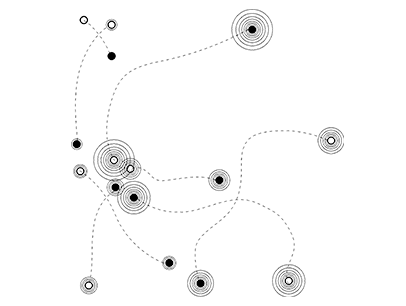Jury Statement
Drinking from plastic bottles (PET) has become an everyday thing in modern life. It is practical and of course easy. But that’s not the full story. We also know that there are issues with endless amounts of plastic ending up in the oceans, and the production of these plastic water bottles adds to this problem. Yet despite having access to more information than ever before about issues like these, we have developed the ability to know things yet still do nothing. Madelene Imhof’s and Franziska Krenmayr’s “The PET Proof of Identity” is a forensic analysis of many common everyday objects to act as a subtle wake-up call about modern life and its effect on the environment. Imhof and Krenmayer use specialized instruments and methods to provide new perspectives on our daily habits. Through the titles of the symbols, they also document the consumer needs of our daily lives, from toilet cleaner to curry sauce. In that sense, the study has an ethnographic character that could possibly puzzle future generations in the same way we are mystified by the Disc of Phaistos. Imhof and Krenmayer have created a striking visual system that is both intriguing and unpretentious at the same time. They have succeeded by documenting the truth as it is, without adding ornaments or visual translations. This political attitude makes their project stand out—not only in its outcome, but also as a reference in methodology and design practice.
The PET Proof of Identity
Project description by the authors
The overriding topic of our symbols is the recycling of PET, or as it’s more precisely called polyethylenterephthalate, which is mostly used in the production of plastic bottles. A PET bottle carelessly disposed of in nature needs around 450 years to fully decompose. But by recycling all plastic bottles, we could reclaim the material and save natural resources, such as avoiding the consumption of 47 billion liters of the earth’s oil. We could also reduce the output of 152,000 tons of greenhouse gas by recycling PET instead of burning it as rubbish. The set of symbols we use comprises 45 different bottles’ bottoms, showing the variety of forms the material can take. When we look at them in a small size, the symbols seem to be nice and harmless. When we zoom into their imprint, the bottles give the impression of a dirty material causing environmental pollution. In order to avoid harming the environment, the PET material could enter a process of recycling, whereby the material from a bottle is reclaimed to produce another bottle, constantly changing shape and form, but keeping its same functionality. With our project, we wanted to sensitize the viewer toward the importance of recycling, but without pointing fingers.
Madelene Imhof & Franziska Krenmayr
Madelene and Franziska are students of Visual Communication at the Academy of Art and Design Basel in their senior year. They both appreciate analog methodologies in the context of design research and practice.
Madelene lives in Sissach and has two snails.
www.imhof-gestaltung.ch
Franziska lives in Basel and likes to dance.
https://www.behance.net/franziskak6afb
Process






